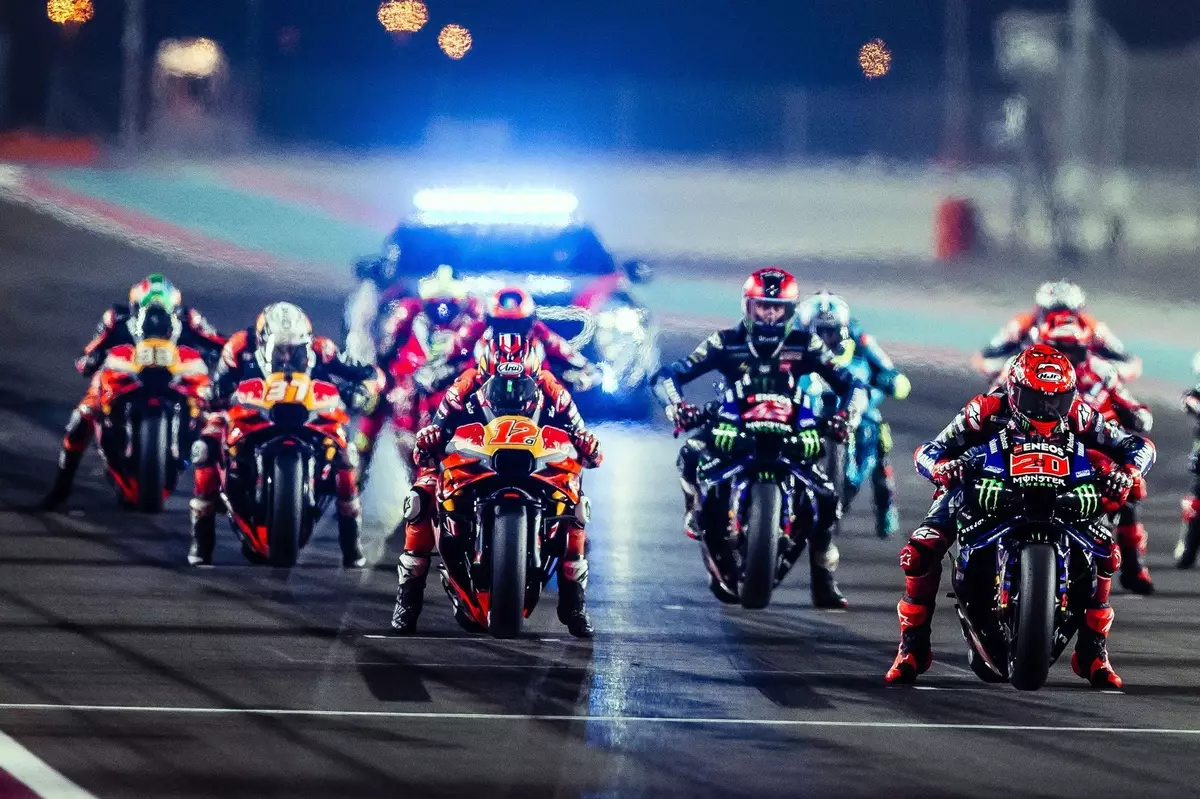Unyielding Regulations The Controversial Tyre Pressure Debate in MotoGP
The world of MotoGP is an exhilarating blend of speed, skill, and strategy. However, it’s not immune to controversies that can ignite passionate debates among fans and professionals alike. Recently, the spotlight has been on tyre pressure regulations, a topic that surged into the limelight during the Qatar Grand Prix. Maverick Vinales faced a harsh penalty when his front tyre dipped below the mandated pressure threshold, dropping him dramatically from second to fourteenth place. This incident underscores the delicate interplay between safety and performance in a sport where every millisecond counts.
At first glance, tyre pressure limits might seem like trivial technical details. But for those who live and breathe MotoGP, their significance extends far beyond mere numbers. These regulations are critical for ensuring rider safety and maintaining competitive fairness. Yet, since their introduction at the 2023 British Grand Prix, they’ve sparked considerable unease among riders and teams. With these rules set to remain unchanged until at least 2027, one must ponder if they’re truly in sync with the sport’s demands or if they hinder the essence of competition.
Key Takeaways
- Tyre pressure regulations are crucial for safety but have stirred controversy over competitive fairness.
- Maverick Vinales’ penalty at Qatar highlights the impact of strict adherence to these rules.
- The debate centers on finding a balance between safety measures and allowing strategic flexibility.
The Opinions of Champions
The aftermath of Vinales’ penalty opened a floodgate of opinions from top riders. During a recent meeting in Jerez, champions like Franco Morbidelli and Marc Marquez weighed in on the debate. Morbidelli, who often finds himself at the forefront of races, emphasized the aggressive nature of MotoGP bikes. He acknowledged that adhering to Michelin’s tyre specifications is necessary to safeguard riders on the track. In his view, accepting these regulations is vital to uphold the sport’s integrity while ensuring everyone competes on a level playing field.
On the other hand, Marc Marquez delved deeper into how these rules affect racing dynamics. He questioned the requirement for tyres to remain above a certain pressure percentage throughout the race distance. This rule impacts strategic decisions—whether to push aggressively or conserve energy within a pack—which can inadvertently lead to pressure drops. Marquez advocates for more adaptable rules that don’t compromise safety but also account for unpredictable race conditions.
The Struggle Between Performance and Safety
Among riders, there’s a shared understanding that while current tyre pressure limits prioritize safety, their implementation presents contradictions. Take Vinales as an example: leading a race only to grapple with unforeseen tyre behavior due to his position raises concerns about whether these rules are too rigid for such a dynamic sport. Francesco Bagnaia, a two-time world champion, shares similar thoughts. While he agrees that modern safety standards are necessary given today’s high speeds, he recognizes the fine line between ensuring safety and maintaining thrilling competition.

This tightrope walk demands careful navigation by both racers and governing bodies. Bagnaia points out that past generations dealt with lower pressures but acknowledges that today’s standards serve an essential purpose in preventing accidents at breakneck speeds. Still, balancing safety and performance remains an ongoing challenge that requires thoughtful consideration from all involved parties.
The Trade-off Risk and Reward
Maverick Vinales brings another perspective by highlighting the downsides of racing under low-pressure conditions. The looming threat of severe penalties—like the 16-second demotion he faced—acts as a significant deterrent against taking risks on track. This fear of punishment may overshadow opportunities for bold competitive maneuvers. Vinales argues that racing with under-inflated tyres hampers performance and reduces comfort levels—two factors critical for optimizing racing strategies.
This aspect reflects what makes sports so captivating—not just competition itself but also stories unfolding through each twist and turn on track. Perceived regulatory inequalities could suppress competitive spirit by discouraging riders from pushing boundaries out of concern over potential repercussions.
Future Implications The Road Ahead
As discussions surrounding tyre pressure regulations persistently simmer within MotoGP circles today—and likely beyond—the prospect for change remains distant yet tantalizingly possible down future paths ahead post-2027 season when new suppliers step onto scene potentially offering fresh perspectives into revisiting contentious ruleset altogether anew again someday soon enough perhaps…
Until then though current framework stands firm testament complexity inherent modern motorsport governance itself where balancing act dual nature competition safety versus performance ever-present challenge facing both athletes administrators alike determined thrive midst relentless ambition driving them forward onwards evermore towards next checkered flag waiting around corner just beyond horizon line visible now…
Final Thoughts
The ongoing debate over tyre pressures in MotoGP serves as a reminder of how intricate motorsport can be behind-the-scenes despite outward appearance simplicity mere watching high-speed chases unfold before viewer eyes momentarily captivated by spectacle itself alone… Yet beneath surface lies deeper narrative exploring nuances balancing act required navigate complexities inherent within sport characterized speed risk ambition second-to-none…
In end though ultimately boils down finding equilibrium between competing interests involved striving achieve optimal blend safeguarding participants fostering fair play simultaneously encouraging innovation strategic prowess among athletes competing fiercely against each other every step way towards ultimate victory glory awaits those willing dare dream big enough reach grasping elusive triumphs sought after eagerly yearned passionately desired above all else…
MotoGP, Tyre Pressure, Safety Regulations, Racing Strategies, Competitive Fairness


Leave a Reply